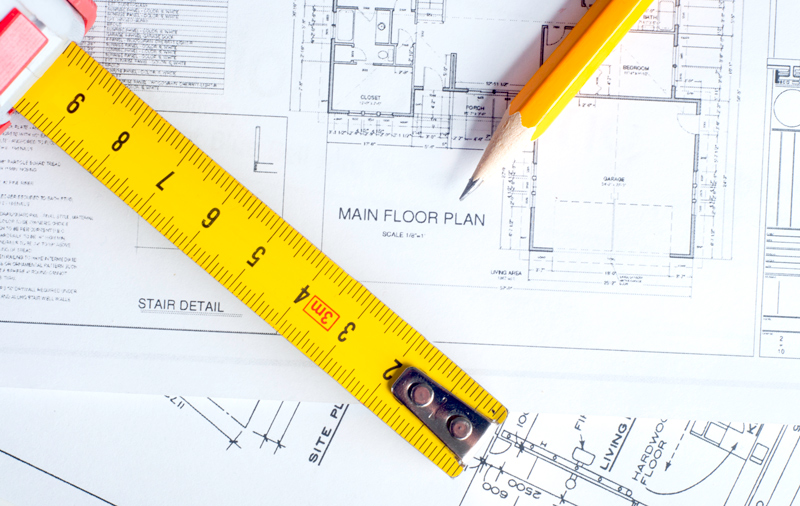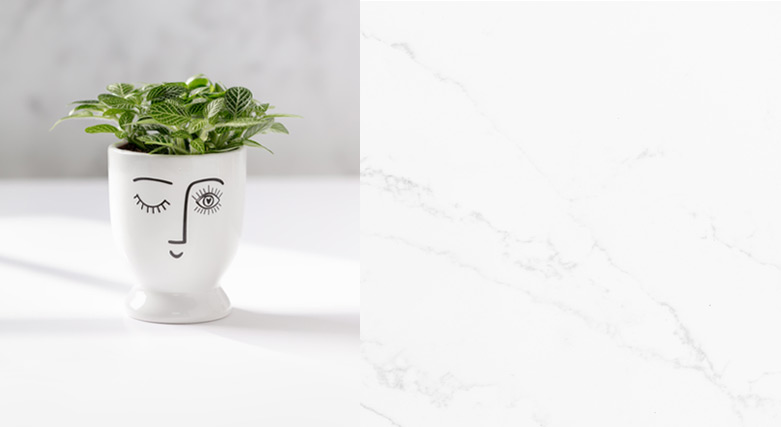Before we start this process, we need to state the obvious. We are not lawyers and this is not legal advice. You need to hire a legal professional to write your contracts and provide you with legal counsel. All we are doing here is bringing topics to your attention so that you can be more informed in your conversations with your lawyer.
As in any industry, it is of utmost importance to have a legally binding contract in place before offering services to your clients. An interior designer’s contract typically covers the statement of work, scope, insurance, fees, refunds, photography, termination of contract, milestones, and more. These terms need to be stated upfront in order to protect yourself and your business. Contracts are a work in progress, with each unpleasant client experience causing the addition of newer clauses adding new protections. This article provides an overview of drafting contracts along with a list of key items that you absolutely must consider.
How to Make Interior Design Contracts?
Based on the scope of work, whether residential or commercial, there are contract templates available for purchase on ASID and AIA. Other websites such as Hello Bonsai allow you to generate online contract forms. You can even purchase contract templates through interior design business coaches. Alternately you can request your attorney to draft you a contract. It isn’t even a bad idea to get a template and deliver it to your attorney as a starting point. She will likely have her own insight as well as state-specific terms that should be included in it.

Wording the Contract
A ‘contract’ is a legally binding contract between the parties involved in the work, signed prior to beginning the described work. Some designers call the document a “letter of agreement”, but they are essentially one and the same. When you create the contract document, choose your words carefully to avoid any disputes that could arise due to technicalities of word meanings. The tone of the document may be strictly legal or casual, serious or friendly, but whichever you choose, make sure that the content is crisp and there are no loopholes in it, and always run it by an attorney before finalizing the contract.
Important Items to Include in the Contract
1. Statement of Work and Scope of Work:
These terms are not the same. While the statement of work refers to a general description of the project, the scope of work lists the actual work involved including deliverables, payments, installations, time frames, and other aspects which govern the completion of the project. (While it may not be possible to determine the entire scope of work at the outset, this document must support your contract and must be signed off by the client.) It would be wise to also include what is NOT included in the scope of work, such as plumbing, electrical, and HVAC, because sometimes clients misunderstand terms, which leads to unnecessary confusion, awkwardness, and strained relationships. If you do offer additional services options, list them clearly and inform the client of the related fees. You should also include an estimated project timeline here.

2. Changes and Revisions:
This section must specify how many revisions are allowed to design plans and how you will proceed with the project if the client proposes further changes or revisions. This clause must highlight changes to payment in terms of additional design fees, and to changes in the duration of the project.
3. Client Involvement:
Some designers prefer to set boundaries while working with clients, mostly to prevent intervening in the creative expression by overbearing clients. Specify how many times during the project the client can check in with you and when. This helps both the client and designer as the designer gets the creative space to work while getting periodic feedback from the client, whereas the client gets to see substantial development in the project with periodic reviews rather than see slow progress with everyday visits. A wise way of wording it is to reference “client input periods” that allow for discussion and signing off on decisions before stepping forward.
4. Budget:
Provide an estimated budget of the project, including costs of furniture, fittings, and equipment (FF&E), procurement charges, delivery charges, and everything else that involves money.

Make sure you add the fact that the budget is an estimate and it will vary depending on several factors such as revisions in plans, availability of FF&Es, and even due to extenuating circumstances such as natural disasters.
5. Fees:
This is the area where most disputes arise. So make sure that you are very detailed in spelling out the terms of your design fees. Conduct extensive research about the laws and rates in your area as they vary from state to state.
a. Outline clearly how you will be charging for your services, whether hourly or a flat fee.
b. Specify how your design fee is calculated. Inform your client about where and why they will be spending their money.
c. Let them know that all time spent on the project including answering phone calls, emails, and texts, creating drawings, purchasing, etc will be billed as a design fee.
d. Clarify whether your fees are payable upfront, before the project commences, or in milestones such as initial deposit, after design approval, and before final installation. (Make sure that they are always paying ahead of your spending).
e. State clearly whether you will be paid in cash, check, or bank transfer.
f. An important clause to add is that all work will be stopped and deliveries withheld until the payment due to you is complete. Also, inform the client if late fees apply.
g. Clarify your retainer amount and make sure you include what part of it is non-refundable, and how it would be used in case of premature termination of the contract.

h. Add the clause that you will not be held responsible for any delays caused by factors out of your control and that you will not reimburse any part of your design fees in such situations.
i. In most cases, clients will have to reimburse any and all travel expenses incurred during the project. You could also consult the US standard mileage rates to calculate the amount for reimbursement of travel.
j. Consider explicitly mentioning that you bill in 15 minutes increments, and thus maximum value comes from communication in sizable chunks rather than in the form of random texts about products they’ve encountered, for example. The point is to encourage them to exercise constraint in their late-night and random sharing. It makes for a more professional relationship.
6. Purchasing and Procurement:
According to your business policy, inform the client whether all purchases will be made through you, based on your recommendations, and, optionally, about the markups and discounts involved. It is your choice on whether you want to be transparent about markups or not. If you are being transparent, list your responsibilities in becoming the retailer such as shipping, logistics, quality control, returns, etc. Ensure that the client expects to pay the full amount before placing orders for FF&Es. The client should be informed that delays in decision-making could lead to additional expenses as vendor prices are subject to change without notice. This is where you can add a “No Price Guarantee” clause, which essentially protects you in case the client delays placing orders due to indecisiveness. Add additional charges for finding replacement items if items are out of stock. As for situations where the client shops behind your back, you may consider stating that the client is to take responsibility for all items purchased and that the designer is not responsible for the quality, warranty, or finish of any of these items. Some designers explicitly state that any items shopped by the client may result in the designer back charging them higher fees.
7. Cancellations and Refunds:
Inform the client in advance about your processing fees on returned items, and that custom pieces are not refundable. All nonrefundable items need to be clearly identified in advance so that the client assumes responsibility for the purchase. Consider adding CFA’s or Cuttings For Approval which requires the client to sign off on proposals before purchasing. An additional clause to keep in mind is that the CFA be signed off by all decision-makers involved, especially if the client is a couple. This can protect you from getting stuck in the middle of a couple’s quarrel (or even a feigned quarrel that is used to manipulate you). Sometimes clients find that they do not like a piece of furniture three months after they’ve used it. To cover yourself in such cases, it is wise to specify the duration after which disputes about refunds or replacements will not be entertained by the designer.

8. Consultants and Contractors:
Keep in mind that the designer’s contract with the client does not cover the external contractors and consultants that would be hired for the project. The client is expected to make separate contracts with each company as and when required. This clause absolves you of the responsibilities if the contractor makes an error and it states that you are not to be held liable for mistakes by the contractor. But at the same time, reassure the client that you will be supervising their activities, if you are, to ensure that they are in line with your design concept.
9. Documents and Drawings:
It is the client’s responsibility to procure any permits that are required. Specify clearly that your drawings are for understanding the design concept and may not be used for engineering or architectural purposes. You should also add a clause stating that the drawings you create are based on the information provided by the client which is assumed to be accurate and that you shall not be held responsible for any design or installation issues arising due to the miscalculations committed by the client. You should also decide on whether, in case of termination of the project, you will be handing over the PDF or CAD versions of the drawings.

10. Copyright:
Inform the client that the drawings, sketches, renderings, and designs are to be considered your intellectual property and owned by you. The client may not use them for any other purpose. You can add a confidentiality clause stating that the client may not reproduce them for future projects unless they have your permission and you are adequately compensated.
11. Photographs and Publicity:
Inform the client in advance that you will be photographing the finished project and using them for promotional activities and in your portfolio both digitally and in print. While some clients may disagree with showcasing their home to the public, you will need to deal with each client differently. You can explain here the measures you will take to protect the client’s privacy. And, you can even stipulate the amount due if you are blocked from photographing the project as photography is absolutely crucial for the growth of your business. That way, if a client changes their mind later on having their home photographed, and this happens all of the time, you can say “no problem, according to our contract, that option will cost you $X to exercise.”
12. Insurance:
It is important to have insurance for all furniture, furnishing, equipment, and other materials that need installation, handling, and delivery. The client is responsible for taking the insurance coverage, and work must not begin until all insurance papers are in place. The designer should not be held accountable for damages incurred during the project due to inadequate insurance coverage.

13. Health and Safety:
With rising health and safety concerns everywhere, you can add a statement as to the measures you will be taking to ensure health and safety for yourself and your team at the job site, and what you would expect of the client in terms of ensuring a safe working environment.
14. Warranty:
The warranty for products purchased is between client and manufacturer, and the designer should in no way be invited to intervene on behalf of the client for matters related to warranties before and after final installation.
15. Termination:
There are times when a client goes rogue and your working relationship struggles. Other times, a life event could bring a project to a screeching halt. This is where the termination clause comes in. Inform the client how they can get out of the project and part ways amicably. The client must pay all outstanding fees and dues prior to termination of the contract. You could also add a contract termination fee here.

It is also wise to include a non-disparagement clause that prevents the client from indulging in activities that result in harming the reputation of the designer or cause unwanted and unfavorable publicity.
16. Disputes:
A clear and well-drafted contract leaves little room for disputes. But in case of disputes which both parties are unable to resolve by mutual agreement, this clause should state clearly how the dispute will be resolved and specify the area of jurisdiction.
Conclusion
It is important to keep in mind that each project you do is unique and you will need to tweak your design contract according to the requirements of the job. Therefore, if you’re unsure of your contract, refer to another designer’s contract as a template only, but do not copy it, as everything you say in there should be specific to your unique style of business, the state you are doing business in, and the particular project requirements.
The list of pointers provided in this article is in no way exhaustive but covers many of the important pitfalls you should watch out for. As previously stated, this article should NOT be considered as legal advice. Rather, it should be used as a reference point to begin drafting your interior design contract.
More often than not, it is an unpleasant experience that gets designers rushing to revise their interior design contracts. Did you have such an experience in your design career? Did we miss out on any other important points that are essential for an interior design contract? Let us know in the comments below and we’ll make sure to use them to continually update and improve this article.










